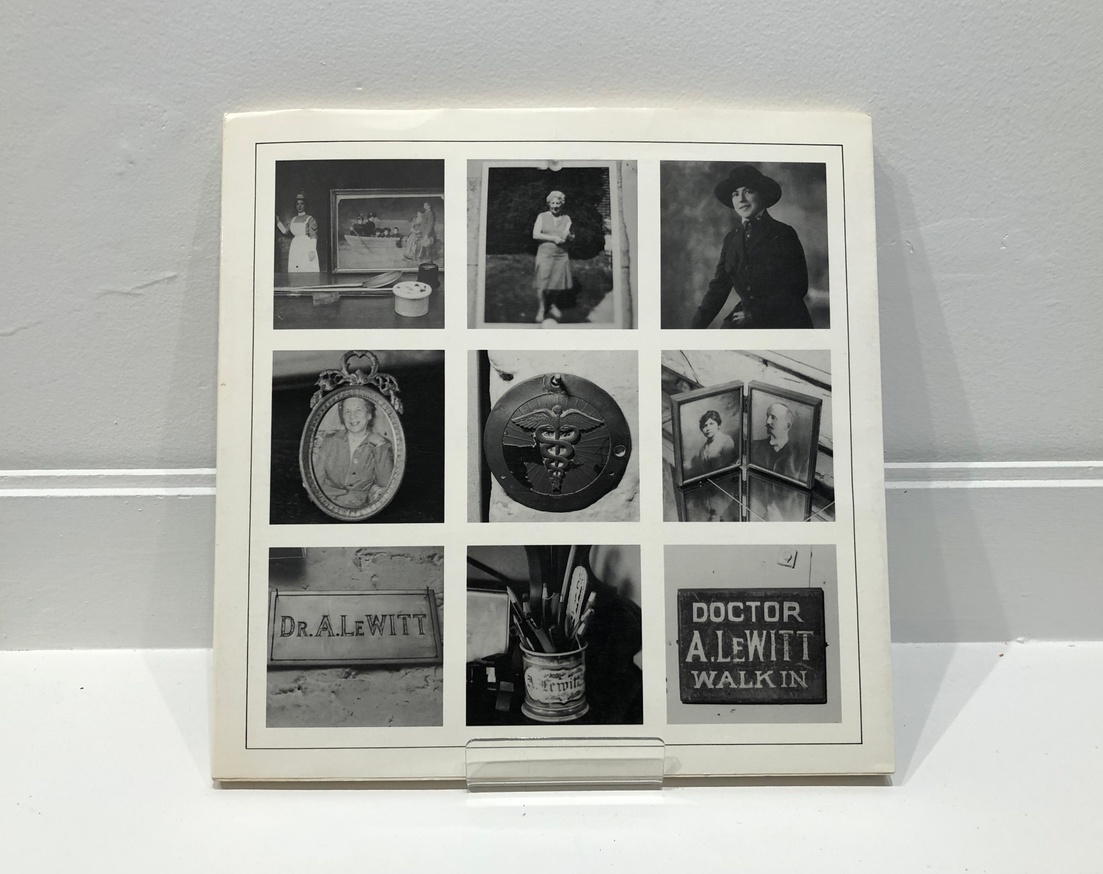Self-Portrait

In giving a tour, methodically, exhaustively, of all that fills up his studio, [LeWitt] seems to recount his life through the photographs of his family bric-à-brac…Despite the title, despite as well the small indiscreet pleasure that one takes in penetrating the universe where an artist, whose impersonal structures were all that we knew until now (did we know that he listened to Lassus and Bach, that he read Beckett and Chandler, that he admired Japanese prints and popular imagery?), the interest is somewhere else, as is the presence of Sol LeWitt elsewhere. [His presence] asserts itself with force, because it is entirely active there, in the book itself.
– Esthétique du Livre d’Artiste: Une Introduction à l’art contemporain, Moeglin-Delcroix
It's debatable how much artistic output represents the author, especially in the realm of design. Yet, I think it's induspitable, that we can find our tastes, ways of thinking, priorities, and other personal traits in the designs that we make. In order to consider how we present ourselves, and our work, to a larger audience, we will do a short exercise of distillation.
- Now that you've collected and did an initial organization of your work, try using the LATCH method to organize it by LATCH (Location, Alphabet, Time, Category and Hierarchy).
- Select one of these methods and push it to its extreme (if you choose location, try and get down to the exact longitude and latitude; if you choose time, try and organize your archive to the second)
- Then dissect (literally or figuratively) your collection and extract, then re-organize your works via your chosen method graphically (for instance you may find any numbers, letters, shapes, colors, etc. and isolate / redraw them).
- Create a series of square (1080 × 1080px) images (minimum 1, maximum 20) that show your re-organized / edited / cropped / processed / etc. collection in a graphic way. Consider if this were to be viewed as a carousel (for instance on Instagram).
Spend ~1 hour on this entire process – it is meant to be a fun examination of your work to gain insights about its organization potential.
Share your images in the KakaoTalk group by next class.
LATCH
LATCH by Richard Saul Wurman
Location
Location is chosen when the information who you are comparing comes from several different sources or locales. Doctors use different locations of the body to group and study medicine. Concerning an industry you might want to know where on the world goods are distributed.
Alphabet
Alphabet is best used when you have enormous amount of data. For example words in a dictionary or names in a telephone. As usually everybody is familiar with the Alphabet, categorizing by Alphabet is recommendable when not all the audience is familiar with di erent kind of groupings or categories you could use instead.
Time
Time is the best form of categorization for events that happen over xed durations. Meeting schedules or our calendar are examples. The work of important persons might be displayed as timeline as well. Time is an easily framework in which changes can be observed and comparisons made.
Category
Category is an organization type often used for goods and industries. Shops and services in the yellow pages are easy to find by category. Retail stores are divided into e.g. men-and woman-clothing. This mode works well to organizing items of similar importance.
Hieararchy
Hierarchy organizes by magnitude. From small to large, least expensive to most expensive], by order of importance, etc. Hierarchy is to be used if you want to assign weight or value to the ordered information.
Talk:
Ex:
- Autobiography by Sol Lewitt
- On and On Kawara by Jesse Prinz about On Kawara
- Bits by Paul Elliman
- Books in Animation by Supersaladstuff
- Functional Typography by Sulki and Min
- Concept Drawings by Sulki and Min
- Ephemera by Sulki and Min
- The Book of Chances by Sulki and Min
- Found Composition 3 by Na Kim
- 100 Chairs in 100 Days, by Martino Gamper
- All Possible Chairs, by Minkyoung Kim
- Typologies, by Bernd and Hilla Becher
- Flattened Fauna, A Field Guide to Common Animals of Roads, Streets and Highways, by Roger M. Knutson
- I'm Google, by Dina Kelberman
- Internet Cache Portraits, by Evan Roth
- Kitchen Portraits, by Erik Klein Wolterink
- I Swear I Use No Art at all, by Joost Grootens
- Modern Ratio, by Choong-geun Yoon
- PIG 05049, by Christien Meindertsma
- Suns from Sunsets from Flickr, by Penelope Umbrico
- Satellite Collections, by Jenny Odell
- SFMOMA Bathrooms, by Omar Mohammad
- Specimen, by Fanette Mellier
- Unicode, by Jörg Piringer